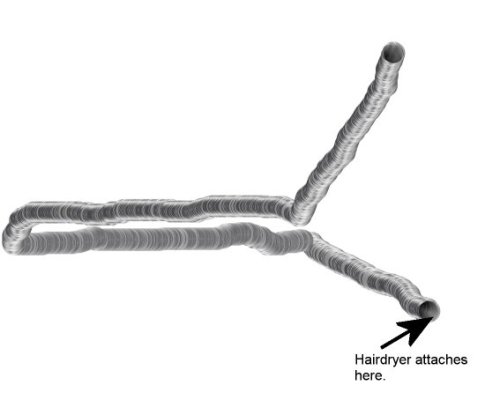If appearance isn't an issue, you could just use a cast-iron automobile exhaust manifold under the grate that holds the wood. Push the air in through the end that used to be hooked to the exhaust pipe, it flows through the pipes and exits (through the openings that used to hook on to the cylinders) into the room. If you want more pipe surface area, you could mate the cylinder-side of two exhaust manifolds, have the single inlet pipe and the single exit pipe (into your room).
A leisurely stroll though your nearest auto junkyard looking under a lot of hoods will probably turn up something shaped right for your fireplace. I don't know what they'd charge, but it probably wouldn't be much. And, you'd be recycling! And, getting those rusted bolts off the exhaust manifold in the wrecking yard will count as strength training.
JC Whitney also sells flexible stainless steel spiral-wound tubing that you might be able to use in this project. An
Example. 35 bucks for 5 feet of 2" diameter stuff. I don't know if I trust that this non-solid tubing is truly tight against CO, so unless I learned it was truly gas-tight I'd only use it outside the fireplace to connect the fan to the solid pipe inside the fireplace. If it really IS gas tight, you could just buy as much as you want, paint it flat black with some stove paint/header paint, and put zig-zags of it under your wood rack. Push the air in from the outside, and have the exit pipe somewhere outside your fire box.
No matter what, invest in a good CO detector and use it all the time in your house. Get one with a digital readout. Saving a few buck on heat isn't worth it if you get CO poisoning and can no longer remember your name. Be careful out there.

